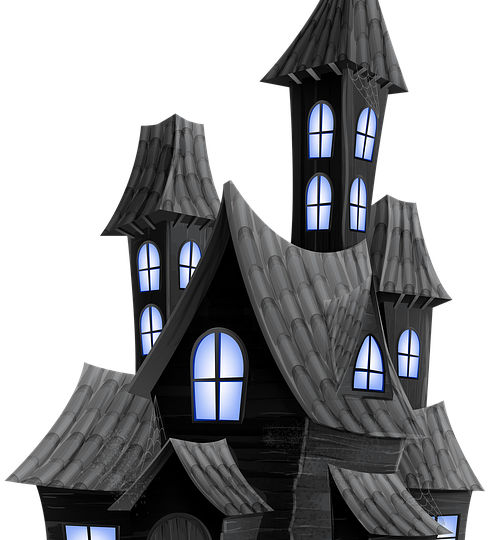The Vampire of Croglin Grange was passed down as a true story told and published. But what was the truth behind this vampire story, and was there actually any truth to it?
Nestled in the pastoral countryside of Cumbria, England, the silent village of Croglin was once host to one of Britain's strangest and most disturbing vampire legends – a story that has sent shivers down the spines of listeners for over a century. This tale, known as The Vampire of Croglin Grange, was first popularized in the 19th century, but its setting and sinister details evoke much older European lore about ghouls.
Croglin is a silent, picturesque hilltop village between the Pennines and the River Eden. Due to its proximity to the Scottish border, in the 15th century the village was often attacked by Border Reivers. Although historians debate its authenticity, the story's sinister atmosphere and eerie details have earned it a place among England's most eminent vampire legends.
The account that ignited a legend
The legend was first widely shared by Augustus Hare in his 1896 book The story of my lifehis autobiography. This story was told by a man named Captain Fisher. The Fisher family had long lived in the area and presented it as an true family event that took place in Cumberland, about 14 miles southeast of Carlisle and close to the Scottish border. After moving to Surrey, the Fishers released Grange.
The Night the Vampire Came
According to Hare's account, in the early 19th century, a brother and sister – Amelia, Edward and Michael Cranswell – rented a remote country house known as Croglin Grange in 1875–1876. The house was charming but isolated, surrounded by open fields and antique churchyards. Although Hare does not mention them in his history, later sources give their name as Cranswell. And although Hare does not provide a date, it is assumed that they occupied this house sometime in the 1870s, when the Fishers moved out.
Read more: Check The Vampire of Croglin Grange – Augustus Hare read it in the version published for the whole story..
One particularly balmy summer evening, the siblings went to bed, leaving the windows open to the night air. As darkness fell, Amelia Cranswell was lying in bed under the lithe of the full moon when she noticed a pair of shining eyes peering out the window. He was described as having a brown face and burning eyes. She watched in horror as a slim, wrinkled figure with unnaturally long fingers crept closer.
The creature deftly unlocked the window, slipped inside and attacked Amelia, biting into her neck and drawing blood. Paralyzed with fear, she managed to let out a blood-curdling scream as the creature fed. Her screams summoned Edward and Michael, who rushed into the room and chased the attacker away – although not before they saw him running towards the cemetery.
A grim pursuit
The next morning, the brothers searched the area but found no sign of the intruder. Fearing for her sister's life, they insisted that she go elsewhere to regain her strength, and they went to Switzerland. A few months later, Amelia returned and, despite lingering concerns, resumed life at Croglin Grange.
But on another moonlit night the creature returned – this time the brothers were ready. Michael and Edward, armed with guns, chased the wrinkled, human-like figure across the moonlit fields to an senior churchyard, where it disappeared into a crypt belonging to a long-dead local family.
The next day, accompanied by local residents, the brothers opened the treasury. Inside they found a mummified, grotesque corpse – remarkably intact – with fresh blood on its mouth. The body was quickly cremated or, in some versions, a stake was driven through its heart before it was cremated, bringing an end to the terror that plagued Croglin Grange.
Fact, fiction or folklore?
Skeptics have long debated the historical accuracy of the Croglin vampire story. Some say it is Victorian Gothic fiction, cleverly presented in the form of oral history. Others point out that although Croglin is a real place, no definitive sources confirm the events described by Augustus Hare.
The story was revived in 1919 when Montague Summers republished it with Varney the Vampire, stating that it should be dismissed as folklore. He found no evidence that Croglin Grange ever existed. It was most likely modeled on the Croglin Low Hall, although there was no chapel nearby.
Folklorists suggest that the tale is part of a broader tradition of ghost lore in northern England and Scotland – stories of the dead returning from their graves to drink the blood of the living, especially during plague years. The creature's withered, antique appearance also bears more resemblance to senior European vampire myths than to the suave, aristocratic bloodsuckers popularized by later Gothic fiction.
Francis Clive-Ross provided more information in a 1963 article published in Tomorrow magazine. Clive-Ross stated that he had discovered information that could add some truth to at least the setting of Fisher's story. Clive-Ross learned that Croglin Low Hall was actually known as Croglin Grange until the early 18th century and that there was in fact a chapel nearby. Croglin residents told him, however, that the incident did not occur in the 1870s, but rather in the 1680s.
As it turned out, the tenants at the time were Fisher's and the owners were the Towry family, and most likely the story came from them. Some have linked the bat-like creature to a local story about the grave of a local priest. Some speculate that the woman actually saw an owl or a monkey that escaped from the circus. Some even suggest that it is a story about the trauma caused by the Civil War, all in order to prevent the possibility of a vampire creature persecuting the locals.
Despite this, there is a window in Croglin Low Hall that is believed to be the window that the vampire showed himself. Currently, it is bricked up and decorated with a lucky horseshoe. Just in case, as a safeguard.
-
The Vampire of Croglin Grange: the secret of the legend
The Vampire of Croglin Grange was passed down as a true story told and published. But what was the truth behind this vampire story, and was there actually any truth to it?
-
Jacques St. Germain: An immortal vampire aristocrat from New Orleans
After jumping off a balcony in New Orleans, a woman claimed the host tried to bite her. After searching his home, police found blood and bloody clothes from all periods. Who was this Jacques St.? Germain, nicknamed the Vampire of New Orleans? And what was the connection with the mysterious, immortal aristocrat from Europe?
-
Poltergeist from the Grossmünster rectory in Zurich
The Zurich Poltergeist was a well-known haunting event that affected the pastor of the church of Grossmünster in his house on Zwingliplatz in the early 18th century. For years, the family suffered torment at the hands of what they believed must have been the devil.
-
Rhode Island Vampire and Legend Sarah Tillinghast
After Sarah Tillinghast's death, the family began to complain that she came back for them at night, sucking the life out of them. The family members fell into disrepair and, thinking Sarah was a vampire, dug her out and burned her heart.
-
Hunderprest: The vampire monk of Melrose Abbey
A cunning and wicked monk called Hunderprest is said to haunt a village on the Scottish border, as well as Melrose Abbey. Was this specter really a blood-sucking vampire?
-
Jure Grando: the first named vampire in European history
Who was the first vampire in history? There are many legends claiming it is the first. One of them is said to be Croat Jure Grando, who terrorized his village for over a decade before they took action to annihilate this štrigon.
-
Ghosts of Château de Chillon: Echoes from the dungeons of Lake Geneva
It is said that the ghosts of Château de Chillon haunt this place from the Swiss Riviera. Deep in the dungeons still lie Jewish prisoners accused of spreading the plague, accused of witchcraft, and political enemies of the House of Savoy.
-
The Curious Case of Annie Dennett and the Vampire Vine
Vines growing from coffins and decaying corpses were a local superstition marking the vampire graves of those who died of consumption. This was the case of youthful Annie Dennett, who was believed to be feeding off her diseased father.
-
The curse of the robber knight Junker Kuoni: the restless spirit of Neu-Bechburg
Hidden in the valleys of Switzerland, Neu-Bechburg Castle is said to be haunted by the robber knight, Junker Kuoni, who was walled up in a secret chamber of the castle.
-
The blood-soaked story of Sava Savanović: Serbia's most eminent vampire
It is said that one of the country's most eminent vampires is hiding in an senior water mill in the miniature Serbian village of Zarožje. The legend of Sava Savanović and his terror has terrified Serbs for centuries, and according to local tradition, perhaps for centuries more.
-
Arnold Paole: A soldier, a vampire and the blood-soaked village of Medveđa
One of the first vampires to cause panic throughout Europe in the 18th century was Arnold Paole. Former soldier of the Serbian village of Medveđa, often called Vampire Zero.
-
Baobhan Sith: Scotland's legendary bloodthirsty woman
There are stories in the Scottish Highlands about a bloodthirsty creature disguised as a lovely and seductive woman. The Baobhan Sith, a much older version of vampire lore as we know it today, still lingers between history and the stories we tell ourselves.
Image Source: Pixabay.com




